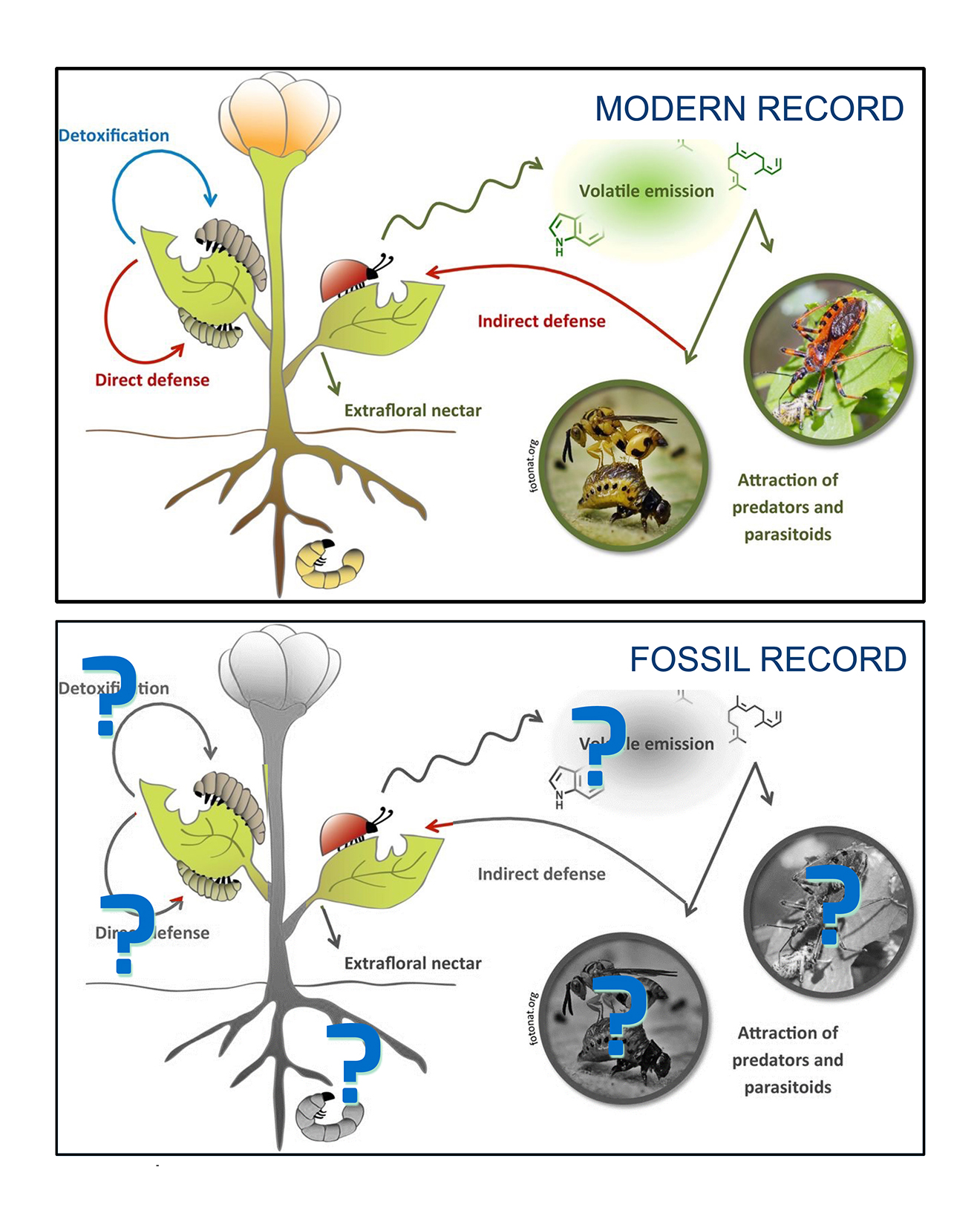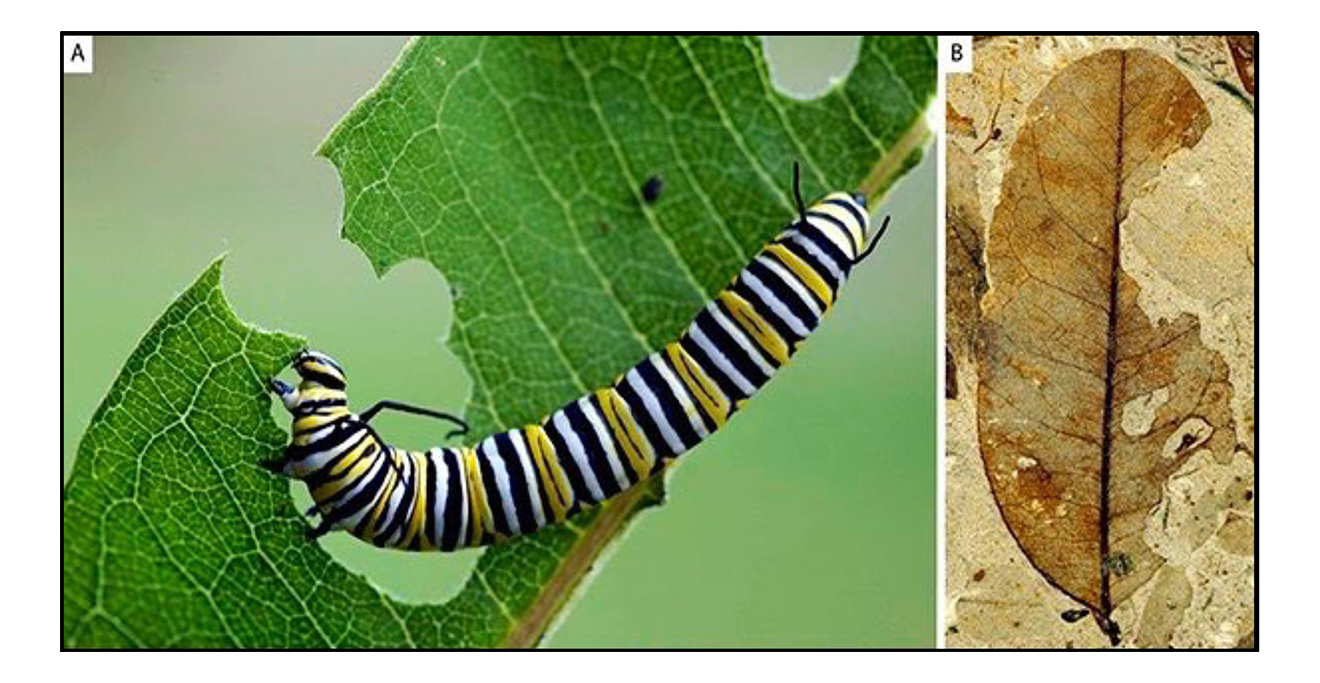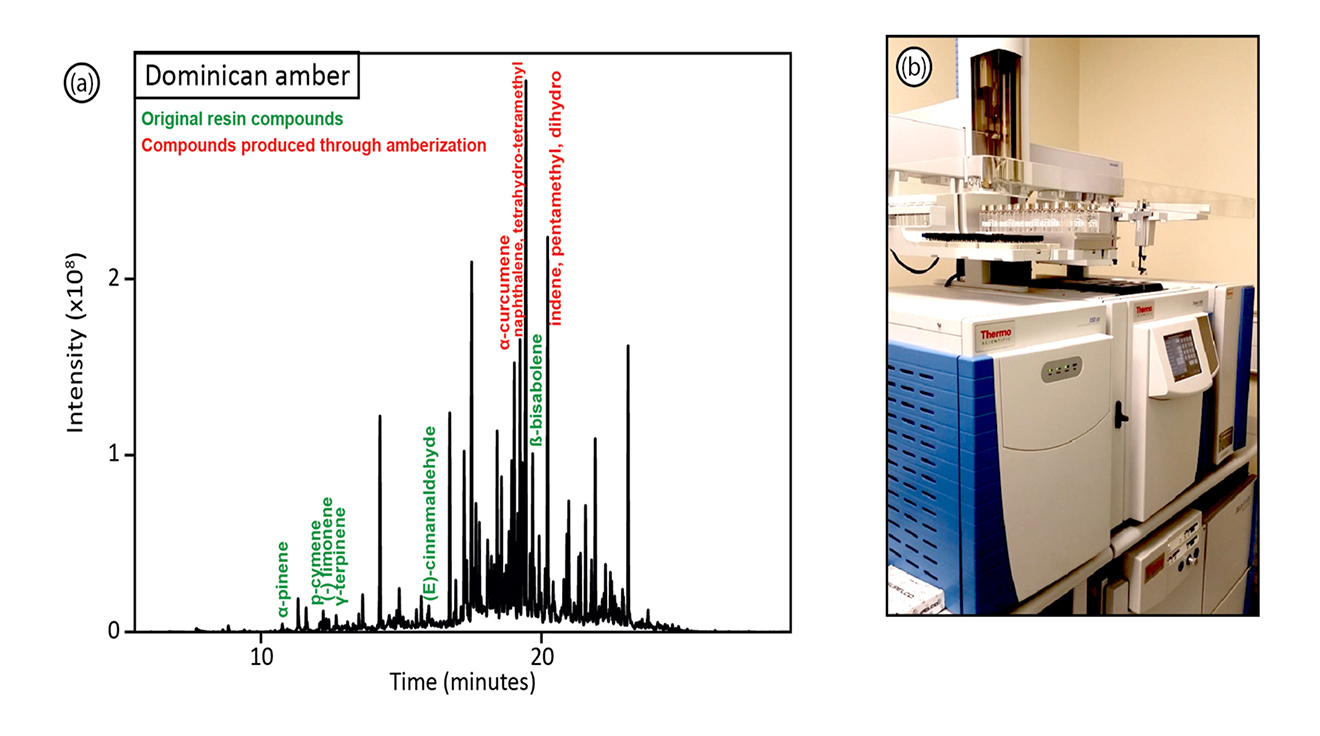DFG Research Unit FOR 2685 | C1
The detection of antiherbivore secondary compounds in the fossil record and their potential role in defense against insects
Abstract
This project aims to use solid phase microextraction gas chromatography (SPME GC-MS) and time of flight secondary ion mass spectrometry (ToF-SIMS) to analyze well-preserved fossil plants to identify any preserved traces of chemical defenses, and to understand the evolution and development of chemical defenses. We are focusing on three exceptionally preserved floras. The analyses of these fossils will be compared to analyses of fresh and decayed modern analogues and pure alkaloids known to be involved in modern chemical defenses.
This project answer two questions:
1. What chemicals were involved in the defense systems through time?
2. Is the morphology of the chemical defense structures decoupled from the actual chemicals they contain?
Plant–herbivore interactions are a product of hundreds of millions of years of antagonisms and mutualisms. Such interactions include some of the most important and complex interorganismic relationships in modern ecosystems, and plant–herbivore interactions in particular were a major component of ecosystems during the deep past: Fossil evidence indicates that plants and insects were involved in major interactions soon after macroscopic ecosystems originated on land, and herbivory ‒ the consumption of living plant tissues ‒ represents an ancient feeding strategy that extends to the Early Devonian about 410 Ma ago [1]. Almost the entire fossil history of this interaction involves arthropod damage done to plants. However, evidence for interactions in the opposite direction, specifically the prevention of plant hosts from herbivory by defense mecha-nisms, is sparse. In particular, there is almost no direct evidence of plant chemical defenses against insect herbivores (Fig. 1).

Figure 1 | Comparing our understanding of chemical interactions between insects and plants in the modern day and throughout geologic time. Diagram from embor.embopress.org.
- Extensive investigations into the trace fossil record of insect herbivory and plant physical defenses throughout geologic time (PI Wappler and collaborator Labandeira) (Fig.2) [3–6].
- Investigations into the preservation of secondary plant chemical compounds in amber, the only commonly fossilized plant chemical defense secretion (named postdoc McCoy) (Fig.3) [7].

Figure 2 | Marginal leaf feeding by a modern caterpillar (A), and in the fossil record (B). From Slater [2].

Figure 3 | SPME GC-MS investigation of volatile and semi-volatile components in Dominican amber. Some are original compounds, other were produced through amberization.
- Investigate the patterns and rates of decay and degradation of secondary plant chemicals.
- Analyze exceptionally preserved fossil plants to determine their original chemical defense systems.
- Answer questions regarding the evolutionary and ecological biology of plant–insect inter-actions through geologic time.







